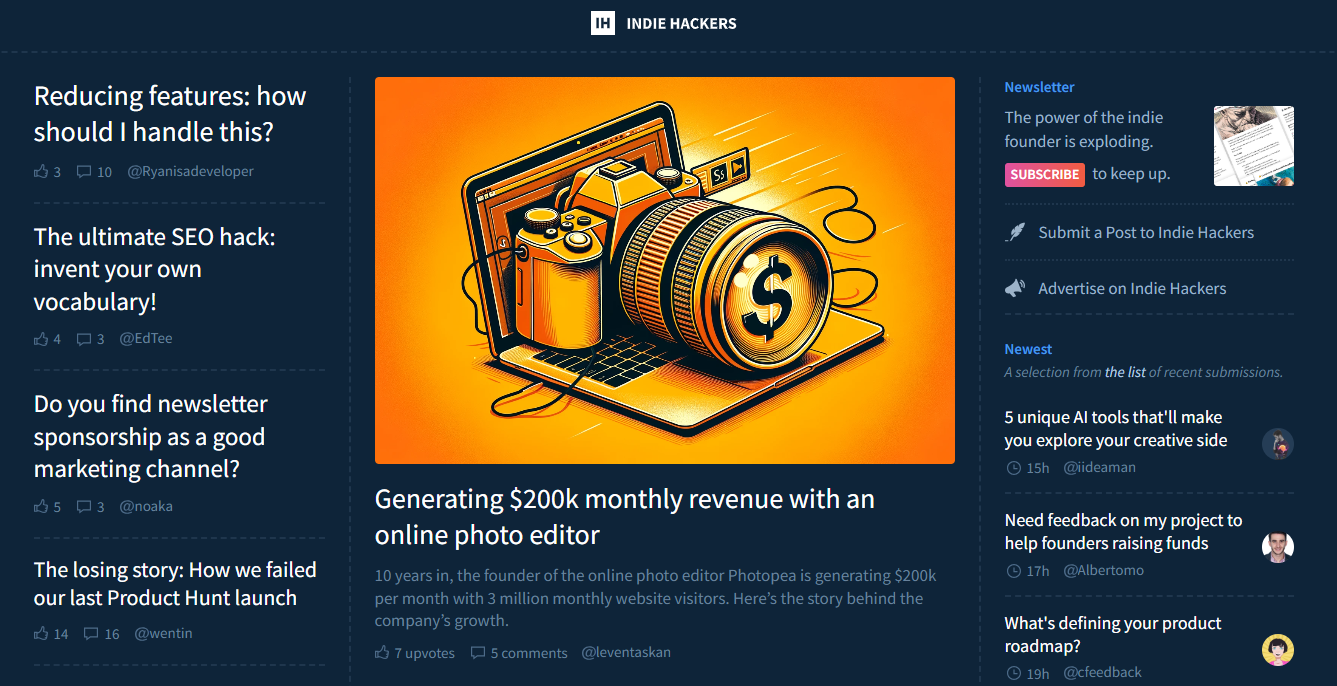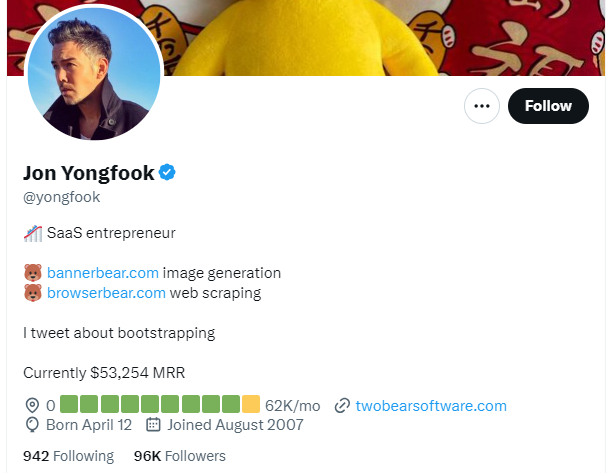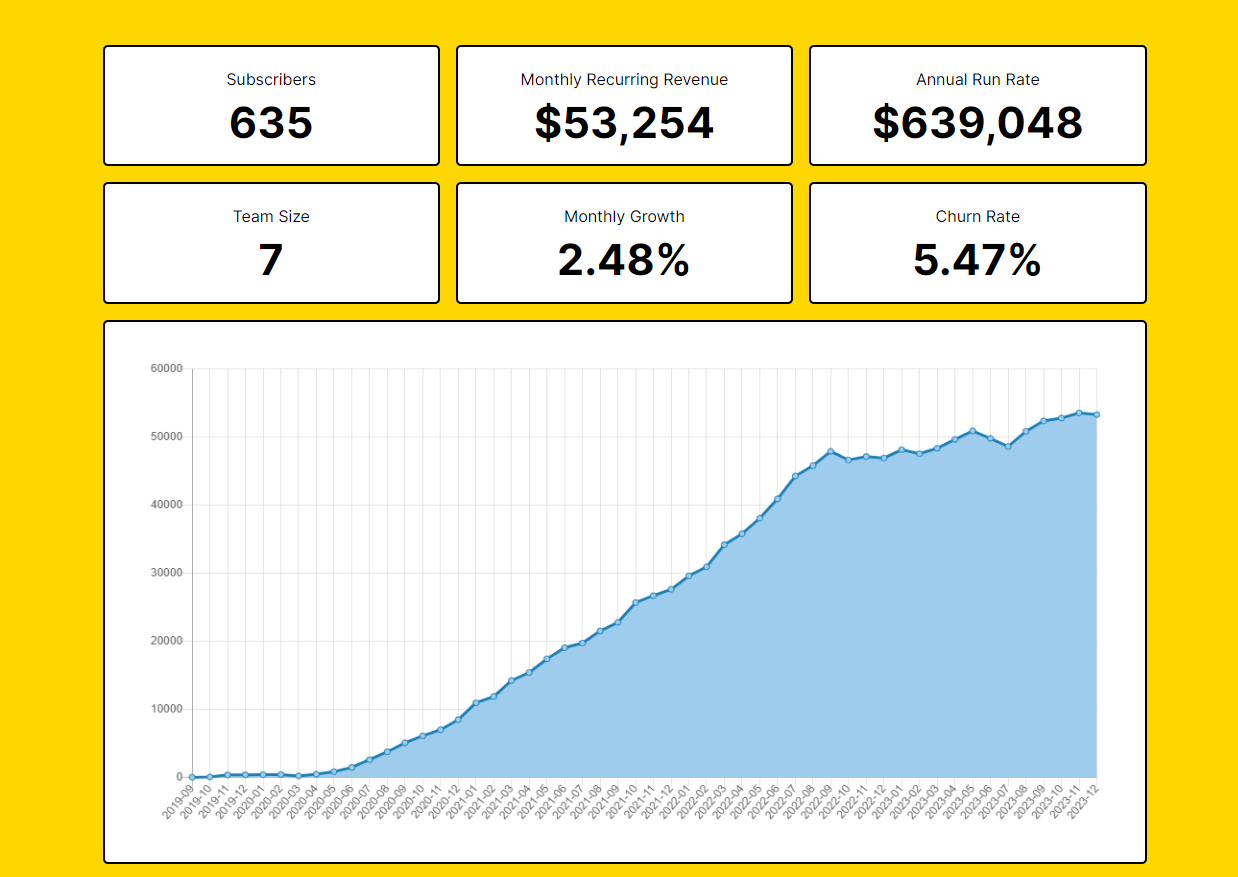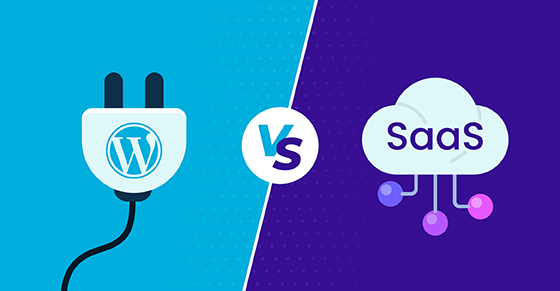|
|
Building in public is more than a development approach: it can be an immersive, inspiring experience that weaves together transparency, community, and product innovation. In a landscape where the lines between creators and audiences blur, the act of openly sharing the software creation process has the power to transform projects into inspiring narratives.
This article explores the power of openness, the strength of collaboration, and how software creators and indie hackers can leverage ‘bootstrapping in the spotlight’.
Joining the Movement: What Is Building in Public?
At its core, building in public is about open communication, sharing progress, challenges, metrics, and successes in real-time, which gives the public an insider’s look at the process. By sharing their journeys openly and honestly, creators not only establish credibility and trust but also attract a community that becomes invested in the success of the project. Or, to put it more simply (courtesy of Build in Public Hub):
Build in Public is:
- sharing stories (wins/lessons)
- being authentic and vulnerable
- rallying a community around your cause
Build in Public is not:
- a gimmick to go viral
- a shortcut to fame
- a ploy to get users
Considering the exponential growth of the movement over the last decade or so, it’s little surprise that building in public can deliver big dividends during the product creation process.
Subscribe and grab a free copy to start Mastering SEO on the WordPress.org Repository
Make the WordPress.org search algorithm work for you with actionable tips to rank your plugin higher.

The Advantages of Building in Public
Giving the public a peek behind the building curtain through various online platforms has its share of advantages (so don’t be shy):
Community Engagement
- Feedback Loop: Real-time feedback from the audience aids in refining and improving the product as you go.
- Community Building: Engaging with users fosters a sense of ownership and loyalty, creating a supportive user base even before the product’s been released.
Transparency
- Trust Building: Openly sharing challenges and successes builds trust with users and can inspire or help other software creators to overcome obstacles.
- Authenticity: Revealing the human side of product building makes creators more relatable and authentic.
Marketing and Visibility
- Awareness Generation: People can smell promo bullsh*t a mile away — building in public generates buzz and awareness through organic, authentic marketing.
- Content Creation: The building process becomes reusable content for blogs, videos, or other marketing materials, maintaining a consistent online presence and populating your pipeline with ample content to use down the road.
Learning and Skills Development
- Knowledge Sharing: Sharing experiences contributes to the broader community’s knowledge base.
- Skill Improvement: Accountability in public can motivate creators to continually enhance their skills.
Iterative Development
- Agile Approach: Building in public aligns with an iterative, agile approach, allowing quick adaptation to user feedback.
Networking
- Connections: Attracts attention from professionals, potential collaborators, or investors, leading to networking opportunities.
Motivation and Accountability
- Accountability: The external motivation of a public audience helps creators stay focused and committed.
Building in public is not only limited to SMBs and smaller software creators. Large companies like Buffer have used it to their advantage, too. Buffer has been open about revenue, remote work practices, salaries, and even equity details. This transparency not only builds trust with their users but also sets a precedent for other companies and projects.

According to Buffer’s State of Remote Work Report, transparent communication is also crucial for building a positive remote work culture.
Now, apply this principle to software development. When founders share the intricacies of their coding challenges, project milestones, and even financial metrics, it builds a bridge of trust with their audience.
A fact that should surprise nobody — considering his company’s stance on transparency — is that Buffer’s CEO Joel Gascoigne is a huge advocate for the movement:
13 years ago today, I launched Buffer.
It’s hard to believe my little side project turned startup turned business is now a teenager. In recent years, I’ve reflected a lot on how to build Buffer to exist and thrive long-term.
With that in mind, I thought it could be fun to share…
— Joel Gascoigne (@joelgascoigne) December 1, 2023
Freemius founder and CEO Vova Feldman is a champion of the process too.
“Numbers have immense power. They can tell stories that words alone can’t convey,” Vova says.
Just hit $ 2k MRR since I switched to @freemius 🎉 pic.twitter.com/1oGEoPFnV1
— Xaver (@xaver_) October 11, 2023
The Allure of Revealing Numbers: Why it’s ‘Sexy’
Revealing specific metrics (like the number of users), financial data (like MRR or number of sales), and other quantitative aspects while building in public is appealing for several reasons.
Firstly, it demonstrates a commitment to transparency. By openly sharing such details, software creators provide a clear, unfiltered view of the project’s performance and progress. This transparency, in turn, fosters trust among the audience and adds an authentic dimension to the building process.
Secondly, the act of revealing specific metrics and quantitative aspects generates significant interest. Concrete data about success, challenges, and growth becomes a compelling narrative for the audience. It allows them to tangibly connect with the building in public journey, creating a more engaging and attention-grabbing experience overall.
One thing you’ll quickly notice is that aesthetics are quite important in the building in public community. Using tools like Xnapper will give you a visual edge when sharing screenshots.
For software creators selling with Freemius, we recently introduced a new chart-sharing feature that allows them to easily generate a beautiful, shareable snap of every chart straight to socials:
Trying out the new @freemius #buildinpublic feature: shareable graphs.
Actually, I was amazed that I almost hit $1k in October with all my WordPress plugins.
Who knows, it’s still October🤣
And 23% improvement from September 👌
Imagine if all days had at least 1 sale. Huh.😅 pic.twitter.com/ukcpzeljzg
— Igor Benić (@igorbenic) October 30, 2023
Providing a snapshot of success stories is not just about numbers; it’s about turning metrics into a narrative, but…
How Much Is Too Much to Share?
When you open the door to your building process, you’re also exposing yourself to potential challenges. This begs the million-dollar question: How much is too much to share? Let’s take a page out of Justin Ferriman’s book, er, blog post about the financial side of sharing:
…transparency reports are a good way to get interest in your project (and encouragement) early on in the journey. You may even get some publicity that you wouldn’t have received otherwise.
But at a certain point, it won’t make sense for you to keep sharing this data. If your goal (challenge) is met, then you can stop sharing without any worries. Your audience who valued your transparency won’t see you as a fraud. You can do a new challenge instead.
Justin has a valid point. In the beginning, publicly sharing goals like ‘I plan to reach $1k MRR in 30 days’) adds accountability and encourages people to follow you. When you have nothing, every new dollar that comes in makes a meaningful difference to growth/percentages, which looks good on charts and makes them appealing to people watching the journey.
But when you get to a certain size, you need to decide if sharing financial data is good for your business. For example, if you make a lot of money and talk about it while sharing exactly how you did it, it can attract copy-cats into the space to take bites from your market share.
Moving on from financials, what other aspects should builders in public not disclose?
- Intellectual Property Details: Specifics about IP, proprietary algorithms, or unique functionalities, to protect the project’s uniqueness. If you’re developing an AI service, don’t reveal its algorithm.
- Personal or Team Issues: Information about personal or team issues that could negatively impact the project’s reputation or internal dynamics.
- Unfinished Features: Details about unfinished features or functionalities that may change, as it can lead to confusion or disappointment among users if revealed before ready.
- Sensitive User Data: Information that could violate privacy regulations or compromise user trust.
The Power of Community In Navigating ‘Build in Public’ Challenges
For bootstrappers and indie hackers, building in public isn’t without challenges. The narrative becomes a bit like a rollercoaster – thrilling highs and (sometimes) stomach-churning lows (and all in the public eye).
My wife and I decided to give up on our startup @logologydesign
It was a tough decision to make, especially after spending 5 years and almost all of our savings to bootstrap it.
But the reality is that despite our best efforts, we never found a way to grow beyond survival…
— Dagobert Renouf (@dagorenouf) June 13, 2023
But fret not, intrepid software founder, for these challenges and failures are but stepping stones to success and they can help others learn and grow in their own entrepreneurial journeys.
Building Trust and Community
Starting a business, but don’t know what your mission is? How about: making your life better? Working on the things you enjoy, at the pace you set, from wherever you want, with the people you love, so you can be happy… these are perfectly fine reasons to start something’
— Cortland Allen, founder of Indie Hackers
Probably the largest example of a ‘build in public’ community is Indie Hackers:

It’s a thriving hub with a forum-style structure and a comprehensive catalog of helpful, inspiring content that helps software creators share progress, seek advice, and celebrate milestones. It’s also a vibrant ecosystem that exemplifies how transparency fosters a sense of belonging and collaboration.
Integrating platforms like Indie Hackers into your building in public strategy provides a centralized space for community interaction, helping you benefit from a culture of collaboration and constructive openness.
What other tools can software creators rely on to share their building in public stories?
Tools and Platforms for ‘Build in Public’ Transparency
Social media (particularly X), blogs, YouTube, and community platforms like Indie Hacker and Product Hunt play a pivotal role in the popularity of the build in public movement. Leveraging these tools and platforms effectively connects developers with their audience, offering a real-time window into their creative process.
Examples of How Bootstrappers Are Building in Public
Here are some examples of how the leading voices in the build in public movement are sharing their journeys and inspiring others as they do:
Sharing Milestones
Picture this: a tweet celebrating a coding milestone, a cool product update/win, or the launch of a feature. The audience becomes part of the victory dance, and the creator feels the communal applause. Here’s Pieter Levels sharing a pretty cool update for his product Photo AI:
Progress today, was able to get rid of the slowmo effect every video had, and now Photo AI makes real time videos
A trick is to do 24 FPS, the lowest possible FPS without seeing it jitter, but that means your vids can be 25% longer than if they’d be 30 FPS
Now figuring out how… pic.twitter.com/bP6w7LBaaE
— @levelsio (@levelsio) December 2, 2023
And if this last one is not a testament to the power of building in public, then I don’t know what is. Here’s Product Hunt founder Ryan Hoover celebrating his company’s 10th anniversary. Guess where he announced his ‘new experiment’ first…
10 years ago today pic.twitter.com/dgxcbeWqDk
— Ryan Hoover (@rrhoover) November 6, 2023
And here’s Danny Postma celebrating hitting 20k avatars for his free avatar generator (note how he quotes a previous tweet to provide a relevant update to his followers):
20,000 avatars created 🥳✨ https://t.co/0yQBovt8T4 pic.twitter.com/IKksIxbCZq
— Danny Postma (@dannypostmaa) December 1, 2023
Asking for Feedback
Getting feedback from your audience opens the door to a treasure trove of insights. At Freemius, we have a Slack community of 1400+ like-minded software creators who build collectively, share advice, and request feedback from one another.
Often, the Freemius team will ask our partners for feedback on new features, such as a streamlined checkout (which is still under wraps 😉) or a revised Developer Dashboard with super-powered sales analytics features. In some ways, development then becomes a shared iterative process for the benefit of everyone in our community.
Teasing Upcoming Features
The art of anticipation is powerful. Teasing upcoming features on social media creates a buzz, turning followers into eager spectators. Speaking of buzz and anticipation, here’s a tweet that Vova shared of an ‘in progress’ new feature that will make it easier than ever to migrate customers from Envato to Freemius:
If you are still an exclusive author on Envato 🍃 (CodeCanyon / ThemeForest) and considering selling from your own site, with the help of @xaver_ from @mailster (Power Elite Author), bringing your customers and purchase codes to @freemius is soon to become… easier than ever! 🤫 pic.twitter.com/UCvdM137XB
— Vova Feldman (@vovafeldman) August 14, 2023
Sharing Revenue
As mentioned, money talk is not something that’s done behind closed doors in the wild world of building in public. Here’s Jon Yongfook displaying his MRR for all the world to see on X, along with a tracker just below to show how close he is to his goal:

He also has an open dashboard on his product website where he displays the number of paid subscribers, MRR, annual run rate, etc.

If you check Jon’s dashboard, you’ll notice how cleverly he leverages it to promote his content and encourage visitors to follow him.
Sharing Struggles/Challenges
The hero’s journey isn’t just about triumphs; it’s about overcoming obstacles. Sharing struggles and challenges on social media can resonate with audiences and other builders who are going through similar trials and tribulations.
Legendary bootstrapper Arvid Kahl interviews prolific indie hacker Tony Dinh about the ups and downs of the bootstrapping journey:
Sharing Success
Success stories in building in public become collective victories. Whether it’s hitting a revenue milestone or reaching a user base goal, the celebration is shared with the community.
Check out this excerpt from the article My solopreneur story: zero to $45K/mo in 2 years:
20 September 2021 was the first day I became unemployed and started working for myself.
It’s the best decision I’ve ever made. Working for myself gives me a freedom I’ve never experienced before.
Over the past two years, I have:
- created four small but successful products (all will be mentioned later in this post)
- built an audience of 97K followers on Twitter
- created this newsletter with 6,000+ subscribers
- jumped on the AI hype train and successfully created a product with it
- and survived a drama that almost killed my business
At the moment, my total revenue across all products is about $45K/month at ~90% profit.
Sharing the Highs (Testimonials)
There’s nothing like a great testimonial to motivate you as a creator. These authentic user stories serve as compelling narratives that not only showcase the real impact of the software but also build trust and credibility. By openly featuring testimonials, creators establish authenticity, fostering a deeper connection with potential users.
That 100 x Landing Page Hot Tips email drip 📬 was maybe the best move I’ve made in my Internet career so far.
It’s a channel that keeps motivating me when working long hrs online.
I set it up almost a year ago & I still get daily Inbox vibes like these, asking for nothing👇❤️ pic.twitter.com/hQIkZY43TF
— Rob Hope (@robhope) March 29, 2021
To help software builders generate more positive reviews when selling with Freemius, an email is automatically sent to the customer one week after purchase, encouraging them to leave a review. We go one step further and automatically generate a shareable review card (for every review) that can be easily posted on social media.
Here’s Jamie Marsland using it in action:
Boom 💥 💪👇 pic.twitter.com/Q30mw0kz9X
— Jamie Pootlepress – YouTuber and WP Plugin builder (@pootlepress) October 11, 2023
Sharing the Lows
On the flip side, disgruntled users also get their chance to shine because sharing bad reviews is part and parcel with building in public. Why? Because sharing both the good and the bad demonstrates a commitment to listening and learning from setbacks, engages the community in constructive dialogue, and showcases resilience. They can also be pretty funny sometimes 😅 A scathing five-star review… who would have thought 🤷
Some people in #WordPress can be downright nasty. 😪 We all make mistakes and we are always sorry when it affects people like this. Kindness and Understanding costs nothing, especially when a product like ours is free for life unless you want a Million words a month for $20.… https://t.co/dw1tyM9X9c pic.twitter.com/r0JDmP1KHE
— Andrew Palmer (@arniepalmer) November 17, 2023
Sharing Lifestyle
It’s not all code and revenue; building in public is also about the lifestyle that comes with an entrepreneurial journey. From remote work setups to travel stories, sharing the creator’s lifestyle adds a personal touch.
Check out Danny Postma discussing digital life and remote work with Arvid Kahl below:
Inspiring Others
The ripple effect of building in public can be inspiring, and the journey of one creator can become a guide for others. Damon Chen has an aspirational X thread about his journey to success, and guess what? It was paved with failures and learnings:
I shipped all these apps in 2020. Most of them generated $0.
🎬 https://t.co/JAhXqsuu6h $0
🌍 https://t.co/BrNUAhfiIT $0
💡 https://t.co/ZWcLfOH4aI $0
🐞 https://t.co/aghOxYEcPI $1.99
👍 https://t.co/2JhJLe27pW $3,025 in 10 days.But that’s ok, just keep shipping! My stories👇
— Damon Chen (@damengchen) December 31, 2020
Turning Code Into Shared Stories
Building in public is more than just a method of promoting your product — it can be transformative for you on both a personal and professional level. By embracing transparency and community, you can turn your code into shared stories that can inspire others to embark on their own software journeys.
So, to you, fellow software creators and innovators: Share victories, learn from setbacks, and revel in collaboration. Here’s to forging a future where innovation knows no bounds, together.







